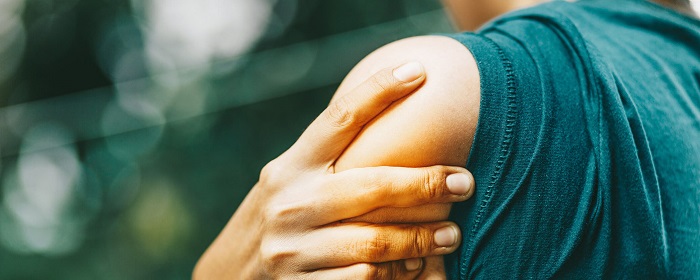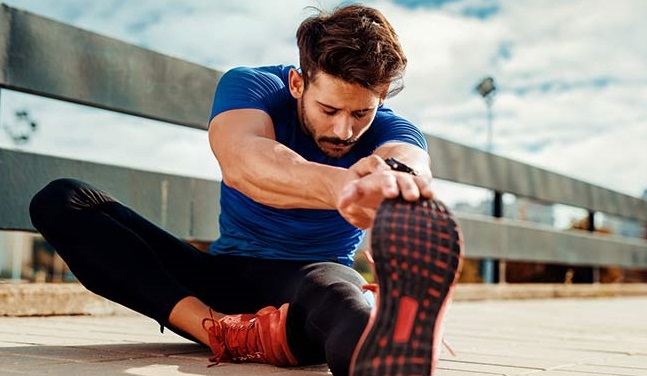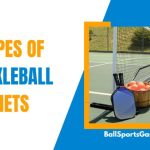Pickleball has become increasingly popular over the past few years because so many people have begun to recognize the benefits it can provide. In particular, the sport has become more popular among people 50 and older. The sport also has a higher incidence of injuries, which is often the case when a new sport attracts many participants.
Pickleball has the same risks and fun as all sports. Playing this thrilling game can result in injuries similar to tennis and racket balls. Any activity that involves stopping short, switching directions quickly and pivoting puts your knees at risk. Sprains, ligament tears, and meniscus tears are common injuries.
Pickleball is a popular sport whether you are a seasoned player or completely new. Regardless of your level of play, you should be familiar with the most common pickleball injuries and fundamental techniques to reduce them.
Most Common Pickleball Injuries Till Now
Shoulder Strain
It is possible to develop shoulder Strain when you overuse your shoulder. In impingement, your bursa or tendon becomes inflamed by repetitive overhead hits. Pickleball players are at risk for damage to their rotator cuffs, but a general shoulder strain is the most common type of injury. Shoulder overextension can damage the muscles, causing inflammation, pain, and even reduced range of motion.

Pickleball Elbow
” Tennis elbow” and “pickleball elbow” are two injuries caused by overuse of the elbow. As the elbow will tend to wear down as a result of repetition, repeated movements such as swinging a paddle will increase the pressure on the elbow. The risk of injury increases if you play pickleball with poor form or training since the poor condition can lead to tendons in the elbow being torn. Aside from soreness near and around the elbow, pickleball elbow can also cause aching, stiffness, and pain that worsens as the person moves.
Read More : Rules of Pickleball Basic
Heel Bruising
A pickleball injury known as heel bruising occurs when the fat pad around the heel is damaged, or irritation occurs over time due to repeated contact and movement. This injury can occur over time. A severe injury to the heel bone may also result in bruising. This injury typically causes bruising on or inside the heel area and pain that worsens as pressure is applied.
Achilles Tendonitis
As a result of increased repetitive activity or a sudden increase in the amount or type of repetitive activity, Achilles tendonitis is commonly caused by the rise in the amount or kind of repetitive activity, such as playing pickleball four times a week after having never played it. Achilles tendonitis can undergo degenerative changes once its initial inflammatory phase has passed.
Ankle Sprain
In general, ankle sprains are caused by treading on uneven surfaces or any time when it is associated with swelling or bruises on the outside of the ankle. This is generally accompanied by discomfort outside the ankle and commonly accompanied by swelling and/or bruises. In most cases, the pain is experienced along the outside of the ankle, accompanied by swelling and/or bruising.
Analyze How Serious Your Injury
1. Analyze How Serious Your Injury Is
It is essential to determine whether you should see a doctor or rest the injury to determine if it will feel better. Furthermore, determining the severity of your injury will help you decide whether or not you need an immediate medical check-up or a routine visit. It’s always a good idea to seek medical advice before self-diagnosing minor bruises or strains, as they are Common Pickleball Injuries that can usually heal on their own with rest. An examination by a doctor can help determine the best treatment for promoting healing.
2. Appointments For Orthopaedic Care
You can schedule an appointment with your primary care physician or orthopaedic specialist if an injury does not require emergency attention. Your physician can determine the extent of your injury and provide you with an effective treatment plan. After your Common Pickleball Injuries have healed, your physician may also advise you on how to return to sport safely.
3. Follow Your Treatment Instructions
It is essential to follow your doctor’s recommendations when healing from any sports-related injury to ensure it fully heals. You will need time to rest and recuperate. To improve the range of motion in the injured area, a physician may recommend physical therapy. Your physician or physical therapist will tell you when you can play pickleball safely again.
Read more : How Do You Play Pickleball For Beginners
Here Are 10 Tips To Prevent Pickleball Injuries
Warm Up – The benefits of warming up for five to ten minutes before playing pickleball include increasing blood circulation to your muscles and preventing Common Pickleball Injuries. In addition to transporting oxygen to your muscles, blood warms up your tissues, improving their extensibility and flexibility and making them less susceptible to damage. Helpful tip: warm up your entire body!

A Dynamic Stretching Exercise – You need to stretch all your muscles, but you want to make sure that the muscles you’ll use the most get a deep stretch. A warm-up stretching routine can help prevent injury while you play pickleball. After a pickleball game, a cool-down can soothe tired muscles and prepare your body for sleep.
Pick the Right Supportive Shoes – It is important to wear shoes that fit correctly and offer support in order to reduce your risk of injuries to the foot, ankle and leg, including sprains, strains and meniscal tears. When choosing a shoe, it is best to choose footwear specifically designed for your sport. For example, if you play pickleball regularly, you should invest in court shoes designed for tennis and pickleball.
Protect Your Eyes – Some racket sports, like pickleball, have been linked to permanent eye damage. Some can result in a permanent loss of vision. Playing any sport with projectiles flying toward you may cause serious injury to your eyes. Sure, it’s just a plastic pickleball, but with careful placement, you can rupture a cornea or rupture an eye socket.
Stay Hydrated – Keeping your body hydrated is essential on and off the court. You need to hydrate to be able to regulate heat effectively and properly. It’s important to hydrate during pickleball matches and before and after your matches. Each person needs different amounts of water a day, depending on how much exercise they plan to do. A general recommendation is to drink four to six glasses of water each day.
Rest well – Your body requires rest between games to repair itself. Exercise can damage tissue, deplete energy stores, and deplete nutrition. Be aware of when your body asks you to rest and refuel to keep yourself healthy. We offer pain and rehabilitation services to those suffering from sports injuries or chronic pain.
Do Not Backpedal! – Due to the smaller court size, pickleball often causes players to backpedal when the ball passes over their heads. Backpedaling can result in falls, sprains, and fractures. These Common Pickleball Injuries occur when a player has their attention on the ball rather than where he or she needs to take the next step. Don’t backpedal. Turn your hips towards the ball.

Prevent Heat Stroke – It is common to find pickleball courts outside. The court can be 5 degrees hotter on a hot day than the surrounding air. Dehydration can lead to more serious health complications. Wear a hat or visor if you are playing outside. Games are short, so your head will need to be protected. Drink water to clear your head or a beverage infused with electrolytes.
Don’t Lose Your Balance – One of the biggest hazards of pickleball is losing your balance. Kessler suggests standing on a balance board or with one leg, which will help you stay in control, and when playing, you should be leading with your paddle to stay upright.
Don’t play on a wet court – Getting out and playing during rainy weather can be tempting, but playing on a slippery or wet surface may be your worst enemy. It may even be your worst enemy. Pickleball enthusiasts are so eager to get on the court they think, “Oh, that’s dry enough.” If you slip your foot out from under you or slam into something hard, you could be out of commission for a long time.
Physiotherapy Can Help You!
Seeing a physical therapist is an excellent decision if you are currently experiencing pain or loss of function as a result of a pickleball injury. Besides identifying and managing the root cause of your symptoms, physical therapists can also help you improve joint mobility and mobility, promote healing, and improve the healing process. You can play pickleball again with the help of a physical therapist you love who can prevent further Common Pickleball Injuries.
Read More : Why Is It Called Pickleball
You should take these hormone supplements and a few over-the-counter pain relievers for a few days to a week to manage your pain. Should you experience severe pain or persistent swelling in the joint, or if your pain doesn’t improve, you should consult an orthopaedic surgeon.
Questions And Answers
You can prevent knee problems by strengthening and stabilizing your quadriceps and hamstrings muscles to prevent knee pain. There are four muscles in the quadriceps and three muscles in the hamstrings. In the front of the thigh are four quadriceps and three hamstrings, respectively.
In spite of pickleball’s engaging nature, there is still the possibility of Common Pickleball Injuries and accidents, including general risks such as falls, bumps, and bruises. However, there are specific injuries that may especially affect pickleball players.
Bending, pivoting, and stopping short again can exert stress on the muscles, possibly even causing minor tears. The leg muscles are at risk, including the hamstrings, quadriceps, hip flexors, and calf muscles. However, you can also strain your lower back as you bend and twist while going for the ball.
To Conclude
It is very important to plan ahead before you play pickleball to prevent injuries. Even among older adults, pickleball is often referred to as a lifetime sport. Common Pickleball Injuries can occur at any moment during playtime, so it is important to know what steps to prevent injuries from happening altogether when you are playing the game. Staying physically active is very good for your health, and pickleball is a fun way to do it. It is essential to protect yourself at all times, and if you suffer an injury to your body, you should seek immediate medical attention as soon as possible.



